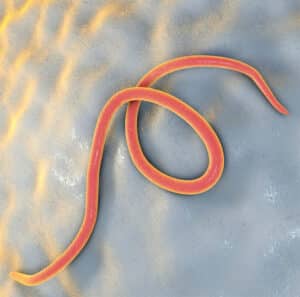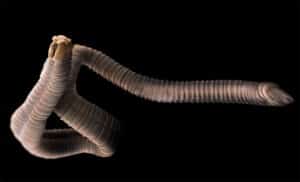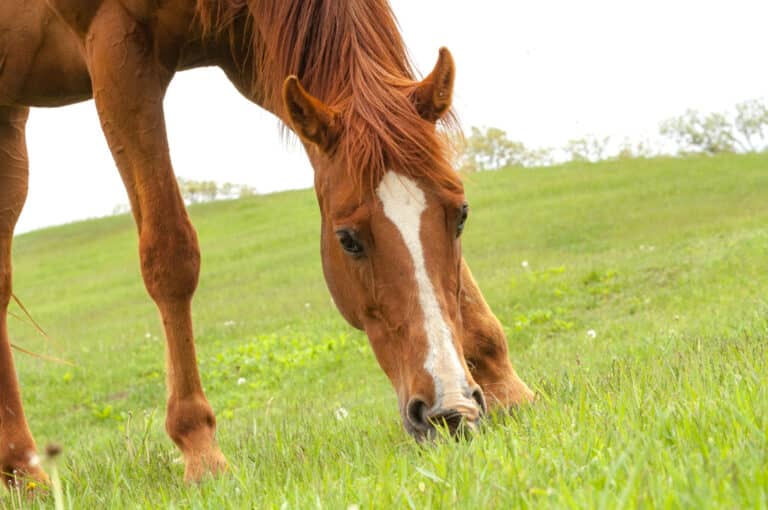With drug resistant worm populations becoming more prevalent, DR DOUG ENGLISH offers some expert advice on dealing with the problem.
The first thing to note is the importance of consulting your vet prior to worming. Not all horses have worms, so ask for a faecal egg count during spring, summer and autumn to assess which horses need treating. Keep in mind that egg counts identify worm eggs and numbers, but they don’t detect tapeworms, pinworms, bots (which are actually fly maggots), encysted cyathostomes, or immature worms.

To be effective, target worms at the correct time of year: encysted redworm larvae in late autumn and late winter; bots in winter; and tapeworms in spring and autumn. If your horses have worms, treat them all at the same time with the same product, and wait 24 hours before moving them to fresh pasture. The recommended dosage (which should always be used) will vary according to the horse’s weight – estimate this as accurately as possible using scales or a weigh tape.
If your horse/s are confined in an area of less than a few acres, you can help control worm populations and their spread with the daily collection and removal of dung, even more important if the enclosure is smaller. Rotating paddocks and spelling pastures for up to six weeks will also help.
Small Strongyles or Cyathostomes: Currently the most problematic internal parasite, as third stage larvae they can exist in much larger numbers than the adults in the wall of the large intestine. They cause ill-thrift, diarrhoea and colic, and are notoriously tough to kill. Effective drugs are limited and populations of small strongyles are becoming increasingly resistant.
Adult female small strongyles live in the lumen (the inside space) of the horse’s large intestine. When they are present in large numbers, they arrest the development of third stage larvae. However, seasonal conditions or worming to remove adult worms allows large numbers of encysted larvae to complete their life cycle and in so doing, cause considerable damage to the large intestine that can often result in death.
Large Strongyles: There are three species – Strongylus vulgaris, Strongylus endentatus and Strongylus equinus. While these parasites have become less common due to effective drenching programs, an emerging resistance is likely to result in them becoming more of a problem.
The larvae of large strongyles migrate through various parts of the body. Strongylus vulgaris, the bloodworm, will burrow into and migrate in the walls of the arteries that are the primary blood supply for the small and large intestines. There they can cause damage and gangrene of the intestines by forming clots blocking the blood flow – which makes them extremely dangerous. After four to five months the larvae move to the lumen of the large intestine.

The other two large strongyles (endentatus and equinus) have similar life cycles, but their larval migration is primarily through the liver and abdominal lining rather than the arteries. These parasites lay several thousand eggs each day. The entire life cycle takes six to eleven months.
Strongyles large and small
The adult form of all strongyles (large or small) live in the large intestine. Adult strongyles produce eggs that are passed out in the faeces into the horse’s environment. These eggs then develop into infective larvae that exist on the pasture, vegetation, or in stalls. The horse is infected when it consumes grass, feed, or water contaminated with infective larvae.
Because of their protective sheath, strongyle larvae are very resistant to harsh environmental conditions. They can survive in a freezing environment, but a hot and dry environment will often kill them. The infective larvae generally survive for up to three months in summer and six months in winter, but last only weeks in dry, hot conditions.
However, with adequate moisture, the rate of larval development increases proportionally with temperature of up to about 30°C. They will die in temperatures above 30°C. In the most favourable environment (temperatures of around 15°C plus moist conditions) larvae can survive for 12 months on pasture. Their life cycle varies from about six weeks to 2.5 years depending on the length of time they are encysted in intestinal wall.
Controlling strongyles
Fenbendazole is labelled for removal of large and small strongyles, ascarids and pinworms. The drug is active against the parasite’s adult life cycle stages, and may be effective in killing the eggs and larvae of certain parasites.
Fenbendazole is well tolerated at 100 times the recommended dose. It is unlikely that an acute overdose will lead to clinical signs as it is poorly absorbed and most remains in the intestines where it is taken in by the parasites. However, it’s better to give more frequently rather than in one large dose. For resistant worms, fenbendazole powder can be fed daily for six days at 10-15mg per kilogram of the horse’s weight. Regular deworming at intervals of six to eight weeks may be required because of the possibility of reinfection.
Other problematic parasites
Pinworm: Pinworms reside in the posterior alimentary tract. Although rarely considered a major threat to equine health, heavy infections may result in fatigue, decreased performance and loss of body condition. Female pinworms protrude from the anus and deposit eggs in the perineal area in a sticky film that becomes irritating as the fluid dries. Consequently, horses rub their tail heads and rumps against fixed objects, causing local damage to the skin.

Tapeworms: These can grow up to 20cm in length with a width 1.5cm. They form into clusters at the junction between the small and large intestines (the ileocaecal junction) where they can cause digestive disturbances, loss of condition, colic and fatal blockages. Horses become infected through eating the intermediate host (the oribatid mite), which is found on grass and forage. The lifecycle of a tapeworm is six months and the effective treatment is praziquantel.

Strongyloides: Also known as threadworm and found in the small intestine of foals, they are associated with enteritis, diarrhoea and can cause irritation when they pass through the skin. Threadworms transfer to newborn foals through the mare’s milk. The young foal has no immunity to this worm and infection leaves them weak and susceptible to diarrhoea and anaemia. Heavy infestation may affect their growth rate. Foals should be wormed against threadworms at as early as four weeks, and worming the mare during pregnancy will help reduce the numbers transferring to the udder. Natural immunity usually develops by six months of age, and threadworms often remain dormant in adult horses.
Stomach worm infections: a widespread parasitic disease caused by three species of nematodes (roundworms) that reside as adults in the stomach: Habronema microstoma (the most common), Habronema muscae and Draschia megastoma.
Depending on the parasite’s stage of development and location, habronemosis can cause mild to severe clinical symptoms including gastric, and cutaneous, mucocutaneous, and pulmonary diseases. The parasite’s life cycle requires an intermediate host, represented by dung-inhabiting flies which become infected, when, as maggots, they consume worm eggs in horse dung. As adults, the parasite crawls around the horse’s mouth depositing larvae which are ingested to complete the life cycle. However, they can also deposit larvae on cuts and injuries, which then crawl into the wounds causing irritation and non-healing lesions called swamp cancers or summer sores.
As the egg stages of Habronema and Draschia are quite small and very difficult to find in faecal tests, the diagnosis is mainly based on necropsy findings and the presence of summer sores. They can be controlled with most normal drenches – I prefer the macrocyclic lactones and I inject subcutaneous doramectin at 1.0ml per 20 kilograms. Keeping the fly population under control is another important strategy.



